|
Wisley's Alpine Log
By Paul Cumbleton
Log 5 27 September 2007
You could be forgiven for thinking, looking at previous logs, that most of our work is with potted plants so this week I thought we should venture outside. With about a hectare of Rock Garden and the Alpine Meadow there is always a lot to do just to keep up with basic maintenance. As well as the areas just mentioned, we also look after a feature called the Monocot Borders. Not exactly alpines, but in our care by virtue of their locality leading away from the top of the Rock Garden.
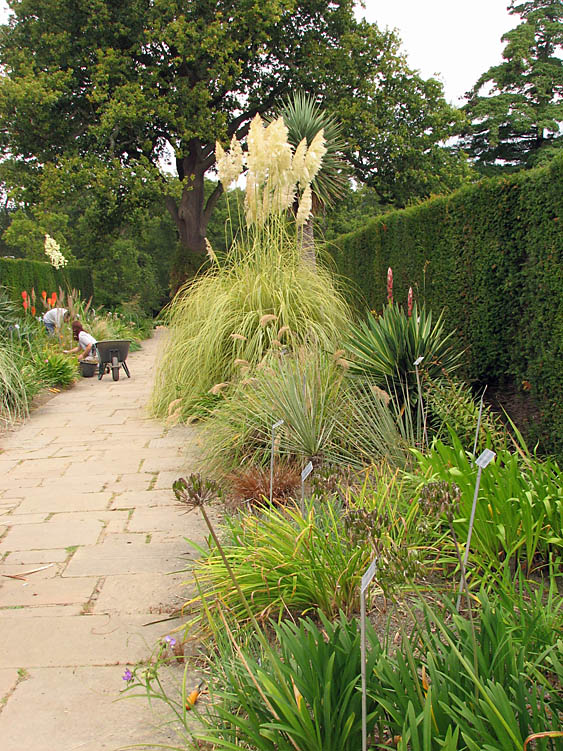
Monocot Borders
We had a blitz on these this week, with a big team effort of weeding and tidying. Doing large jobs like this all together makes it quicker and more fun.
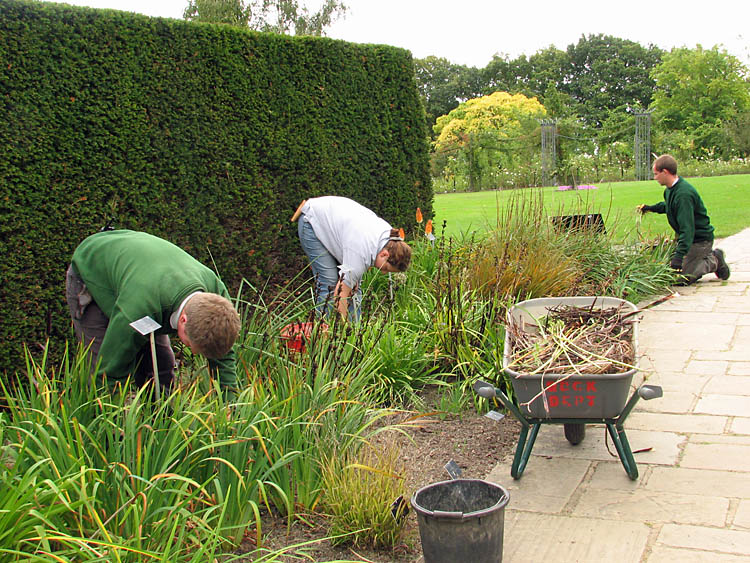
Working on the Monocot Borders
Some tasks on the border need safety gear - removing dead leaves from a Yucca could otherwise be a painful experience!
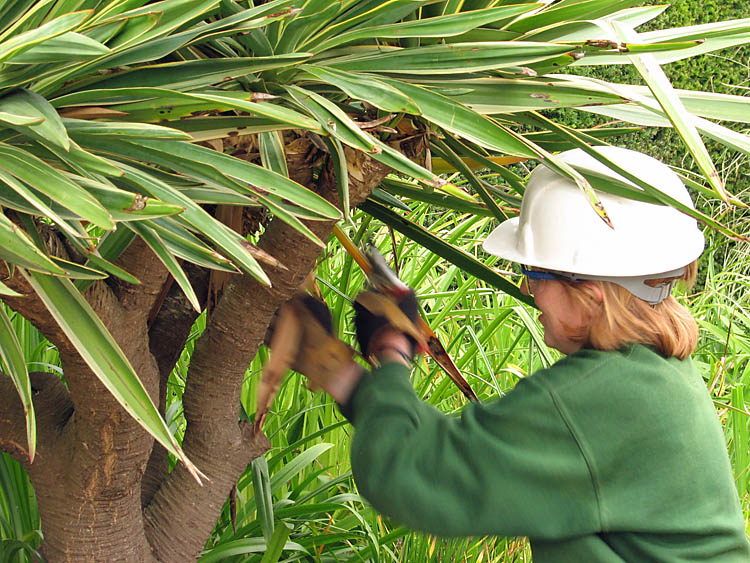
Removing dead leaves from a Yucca
We were helped with the weeding by some new faces. This past week saw the start of the new term for the Wisley Trainees who come to study horticulture and gain their Diplomas. Those on two year courses spend one day a week at lectures then the rest of the time working in the garden gaining practical experience. They spend 3 months in each department in the garden, slowly working their way round until they have had time in every area. So every 3 months we get a new lot of trainees in the Alpine Section. The exception to this is that a few trainees choose to specialise and pursue what we call an SOC - Special Options Certificate - and this lasts for one year. The SOC trainees spend the whole year in the department offering their chosen specialism and so do not move around the various garden departments We offer an SOC place in the Alpine Section and this week our new SOC, Gemma, started along with the other new Diploma trainees. They help with and learn about basic things, as well as specifically about alpines.
Here's Gemma helping with some mulching in our woodland area at the edge of the Rock Garden:
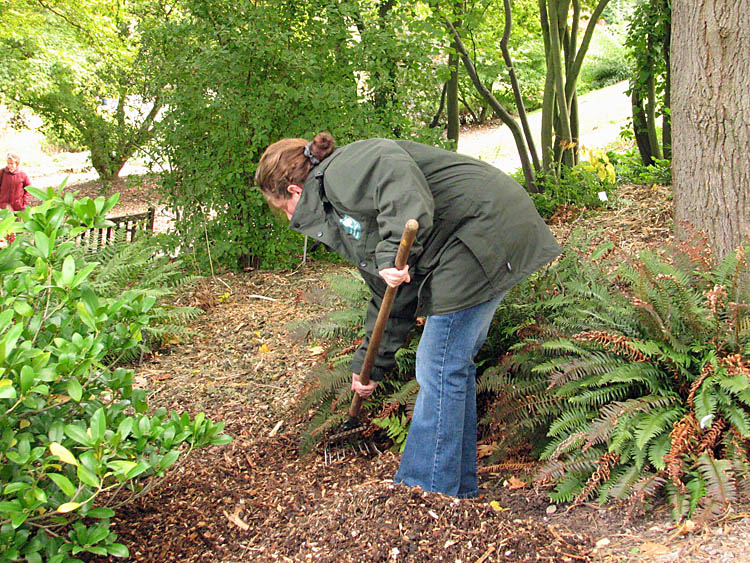
Mulching
There is a small area of grass near the western edge of the Rock Garden and edging this was another urgent job this week. This was ably carried out by one of our volunteers, Helen:
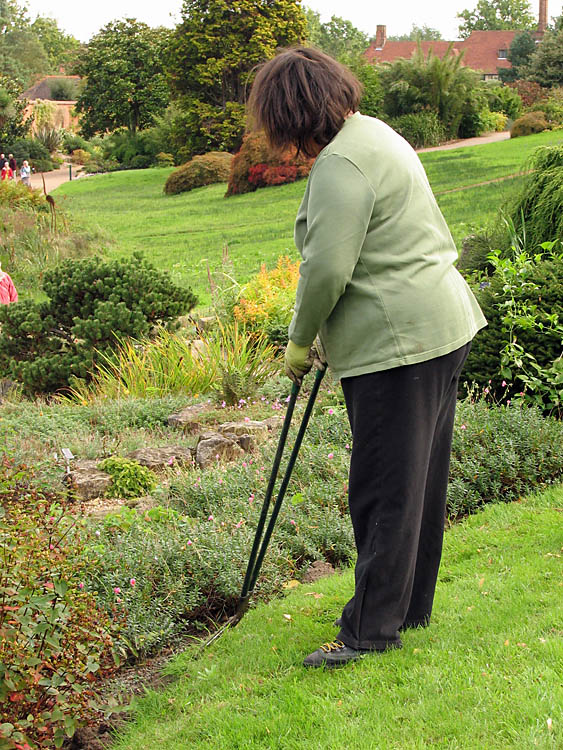
Grass Edging
Though the main flushes of colour have faded, there are still many plants looking good on the Rock Garden. Silene californica (or is it S. laciniata?) can light up any dull area and here looks wonderful against a mossy rock:
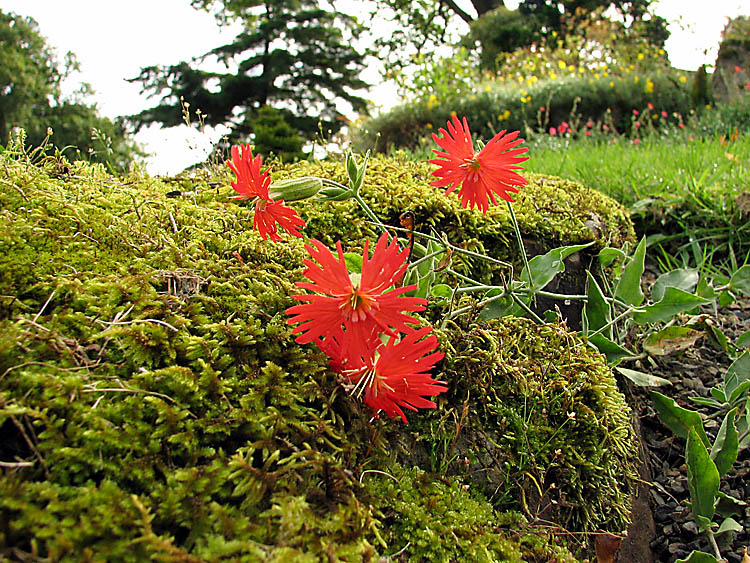
Silene californica
In slightly shaded areas there are still Roscoeas in bloom. The fabulous R. purpurea 'Red Gurkha' has put on a particularly good show this year. This plant is now becoming more available, with at least two nurseries offering it. It emerges from dormancy in June and makes a stocky plant that quickly clumps up to give several stems. Though beautiful, it has two weaknesses - like other Roscoeas it is very prone to slug and snail damage, especially while emerging, and secondly the flowers are often not held clear of the foliage so look rather cramped in the leaves. Some people are using it to hybridise with, so it will be interesting to see what the future brings.
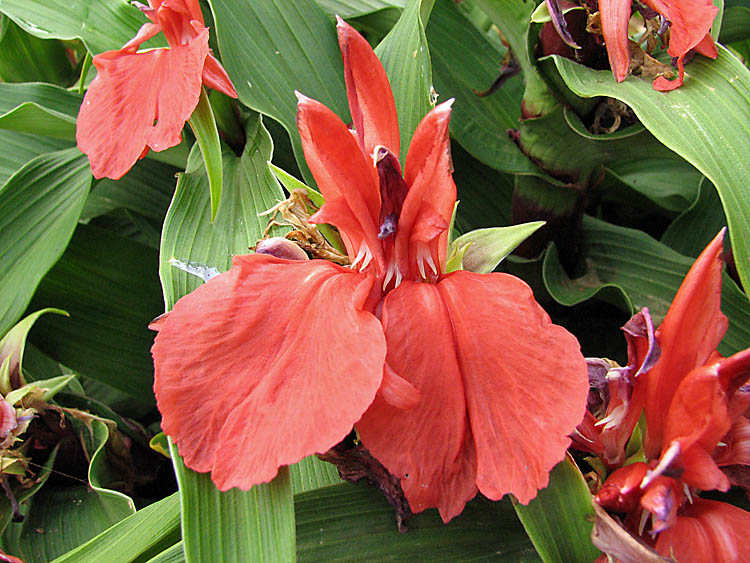
Roscoea purpurea 'Red Gurkha'
Another Roscoea that has been looking good is R. 'Vincent'. This has particularly tall stems and large mauve flowers. It was at its peak in July through into August but some blooms lasted into September.
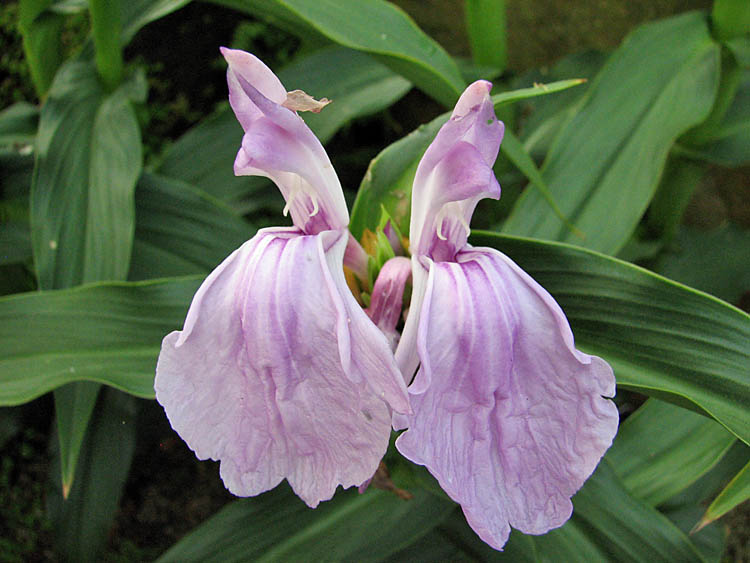
Roscoea 'Vincent'
Erigerons give a long season of flower and some still look good now.
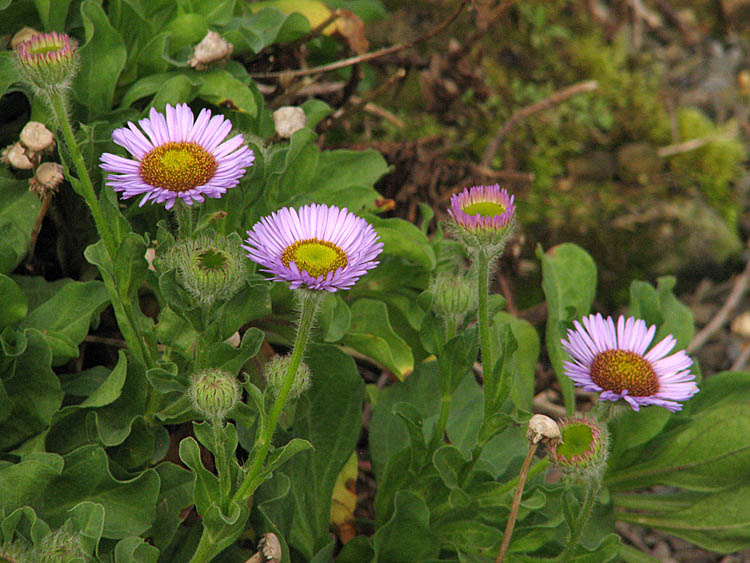
Erigeron glaucus 'Roger Raiche'
At the bottom of the Rock Garden in a moist area near one of the pools, the Schizostylis have been especially good this year - they must have liked the wet summer.
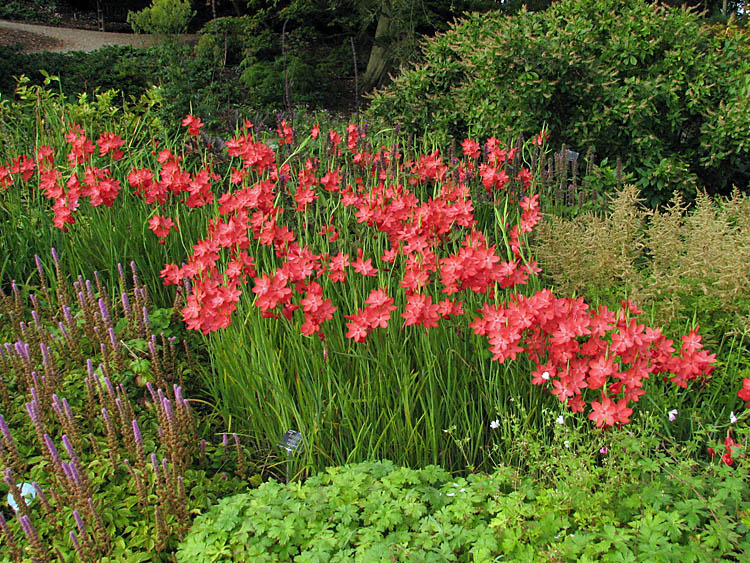
Schizostylis coccinea 'Salome'
The Rock Garden is fortunate in having several pools and other water features. We are often asked how we keep them so clean and clear. Part of the answer is that the pools have been established for a long time (over 100 years!) and have got a good natural balance.
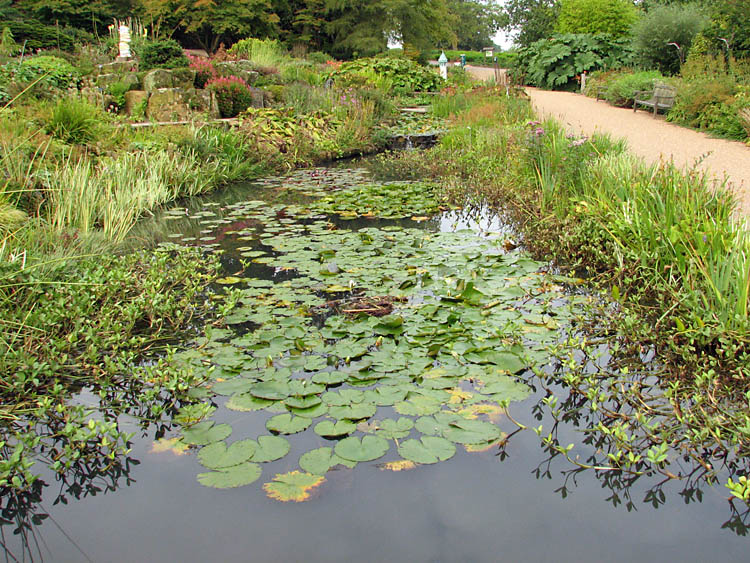
Rock Garden pool
But another answer is a lot of time and effort, usually by the trainees. Every morning someone goes round and clears the ponds of leaves and other debris that has fallen in and takes out any blanket weed that may be forming.
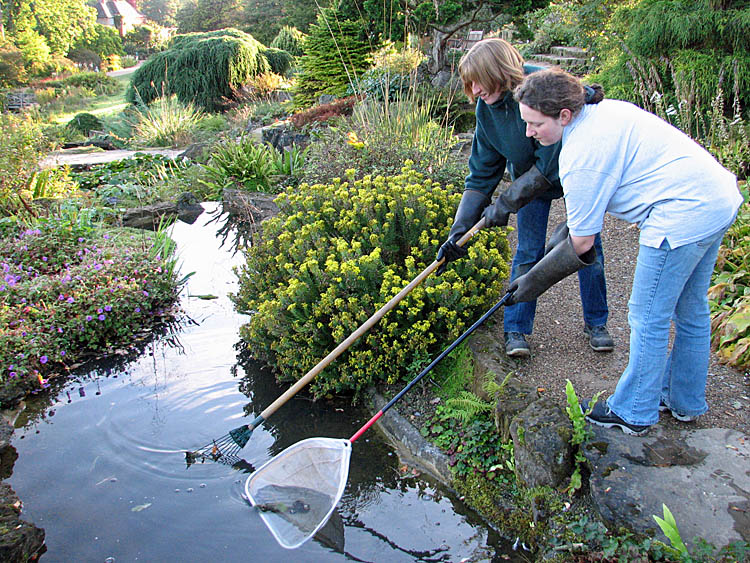
Cleaning Pools
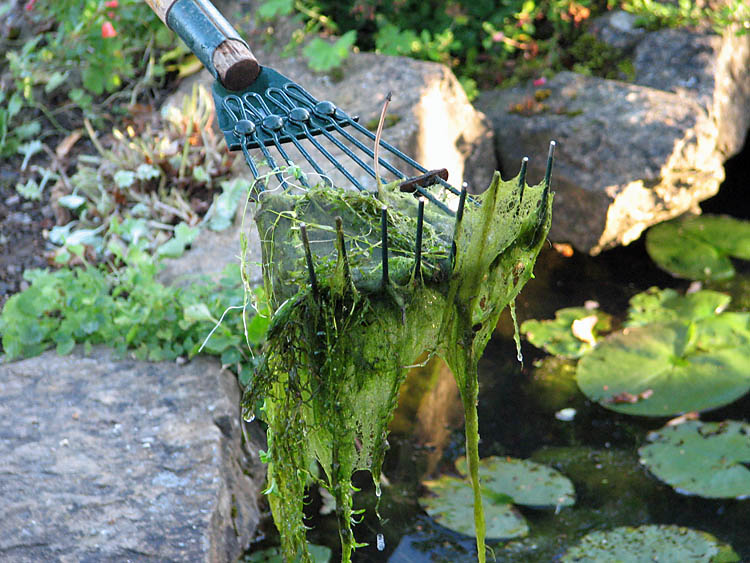
Removing blanket weed
Doing this every day keeps the pools looking good. We appreciate that most gardeners wouldn't have the time to do this so frequently, but as we are a public garden we need to try and keep things looking good for every visitor no matter when they may choose to visit.
The ponds are great wildlife habitats with all manner of aquatic life, birds, amphibians, snakes and fish benefiting from their existence. When there are chicks about they invariably create much more interest than the surrounding plants!
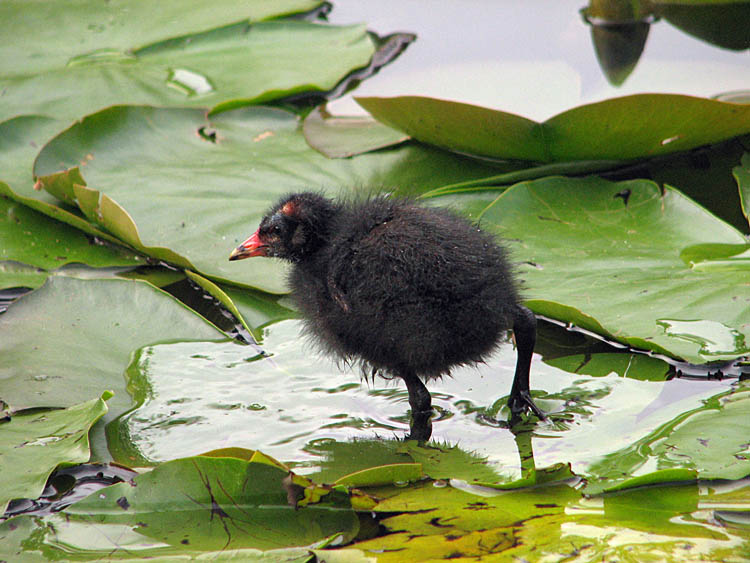
Baby Moorhen
There are many fish in the larger ponds including some big carp and these always attract children who are fascinated by them.
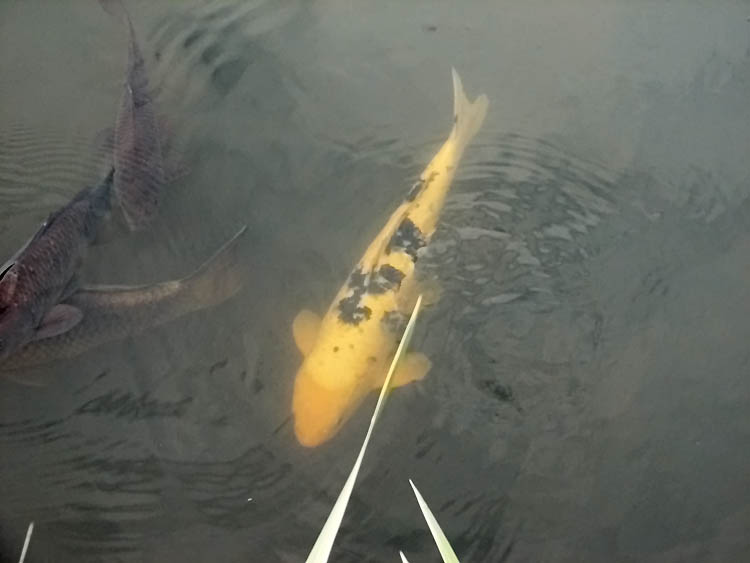
Carp
Throughout September there has been a temporary display of sculpture by the Surrey Sculpture Society, organised as a trail with many examples all over the garden. We had several in our area. Some of these were brilliant and looked perfect in their situations. Others I personally found less pleasing ("horrendous" would be a more honest word!) and looked completely wrong on the Rock Garden. You can probably guess which was which, but of course tastes vary, so see what you make of this selection:
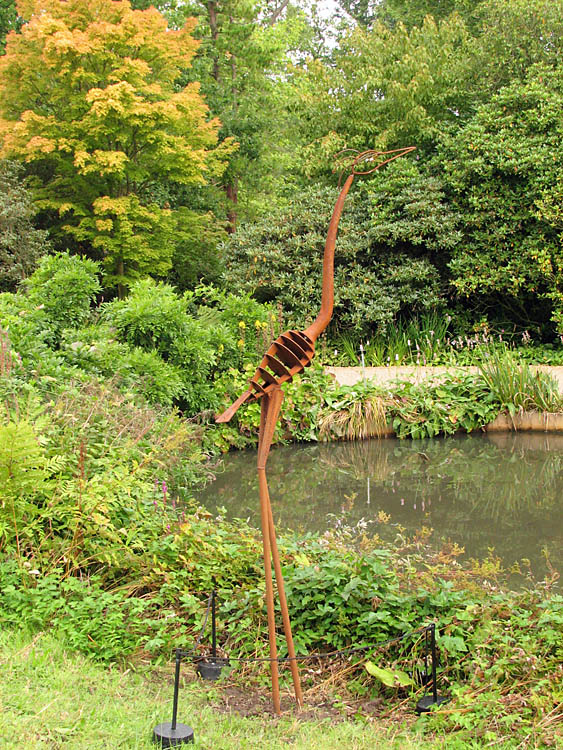
Surrey Sculpture Trail 1
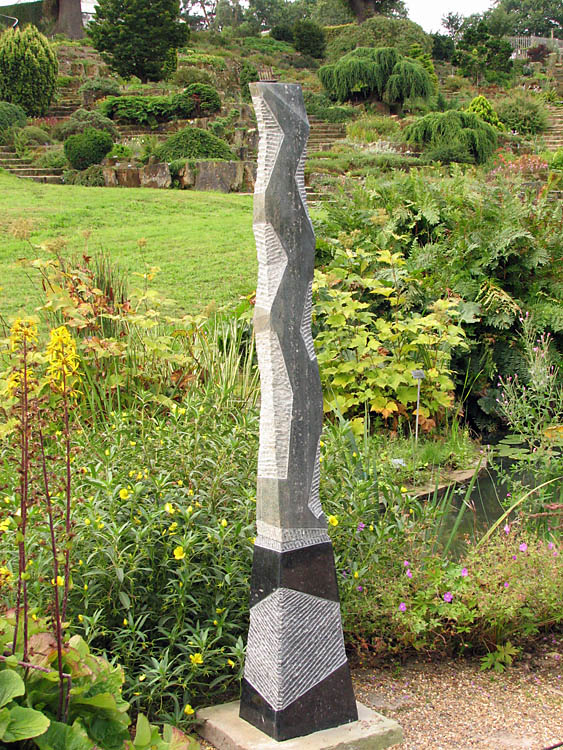
Surrey Sculpture Trail 2
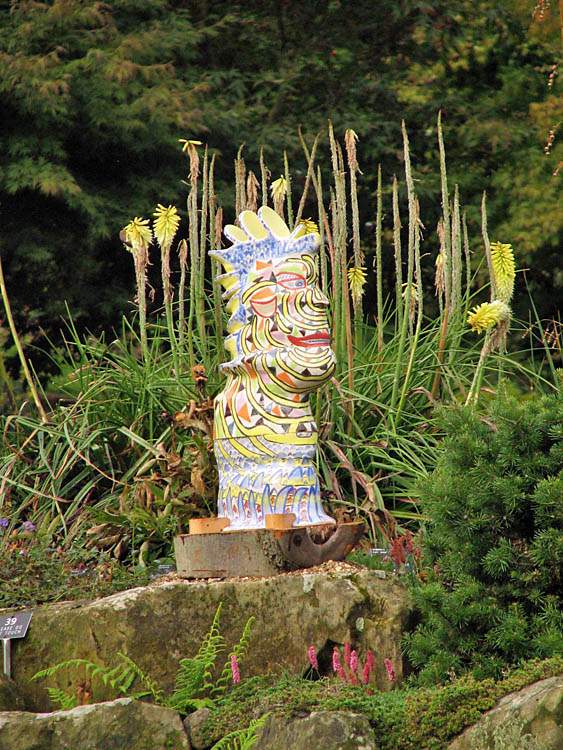
Surrey Sculpture Trail 3
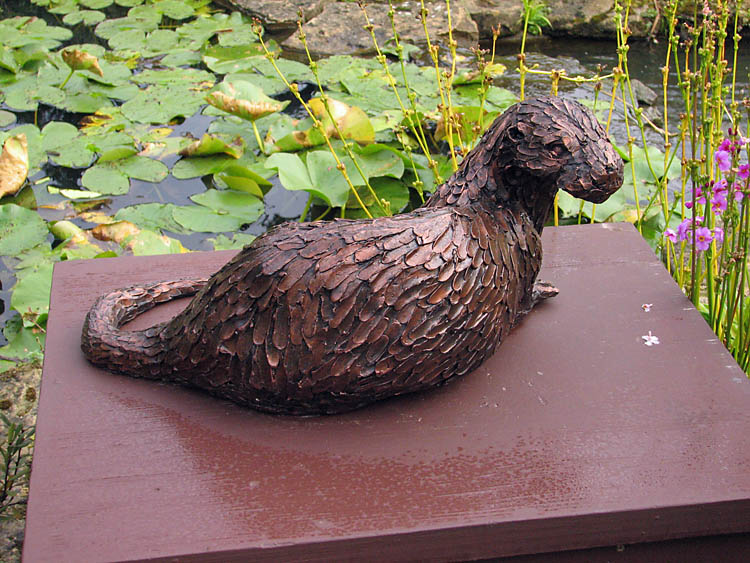
Surrey Sculpture Trail 4
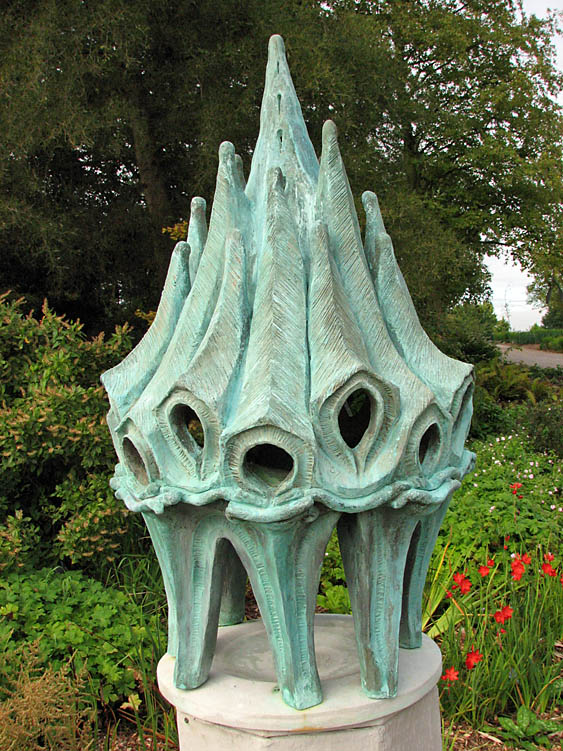
Surrey Sculpture Trail 5
Looking through one of the holes in that last sculpture gave a lovely view of the Schizostylis
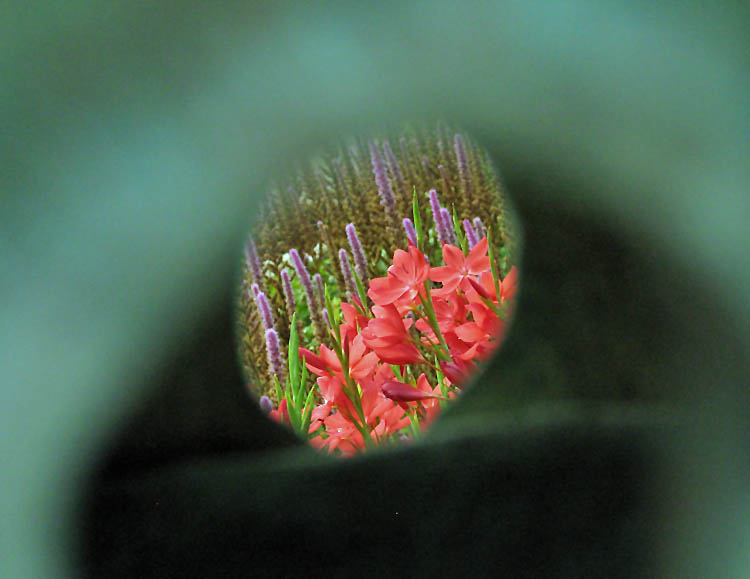
Sculpture's Eye View
Finally I'm going back under cover as there is one plant I simply must show you this week. Not an alpine but a desert plant from Australia. It is Swainsona formosa (formerly Clianthus formosus). Its common name is Sturt's Desert Pea (though we prefer to call them "black bottoms"!). We were kindly given seed brought back by one of our volunteers (who hails from Tasmania) and these have flowered just a few months after sowing. The flowers are just fantastic!
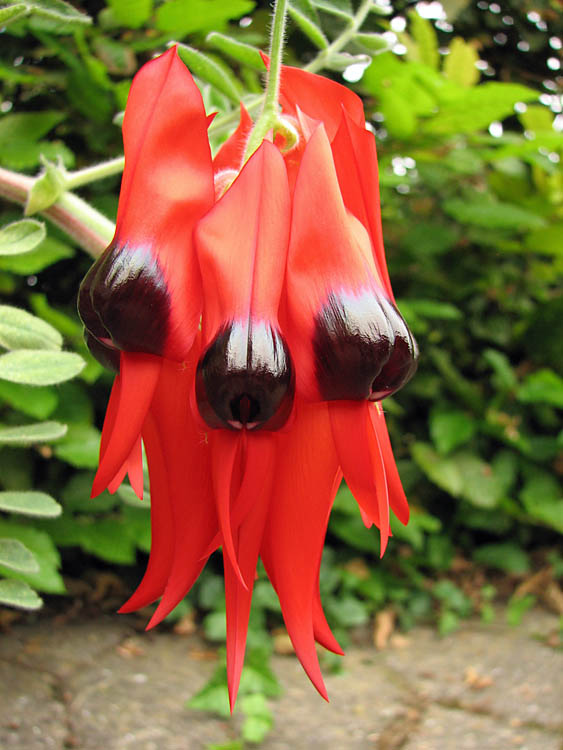
Swainsona formosa
Being a plant of very arid areas, the seed is adapted for survival and can remain viable for years, protected by a very hard seed coat. This can give germination problems but this may be overcome by any of the usual methods for such seeds - i.e. nicking the seed coat away from the eye, or rubbing gently between sandpaper or soaking overnight in hot (but not boiling) water. I used the latter method. The heat helps crack the seedcoat and where this has been successful you will find next morning that the seeds have swollen noticeably. These are the ones to sow (any un-swollen ones can have the treatment repeated). They like to be warm if indeed hot for germination - I covered the pot with a sheet of clear plastic and left it in full sun in a greenhouse. This made the surface of the compost very hot indeed and this did the trick. Like many desert plants, they quickly develop a deep tap root and resent being disturbed, making it tricky to prick them out. It is better to sow where you want them, in our case in a la
rge deep pot in a very gritty mix.
^ back to the top ^
|

